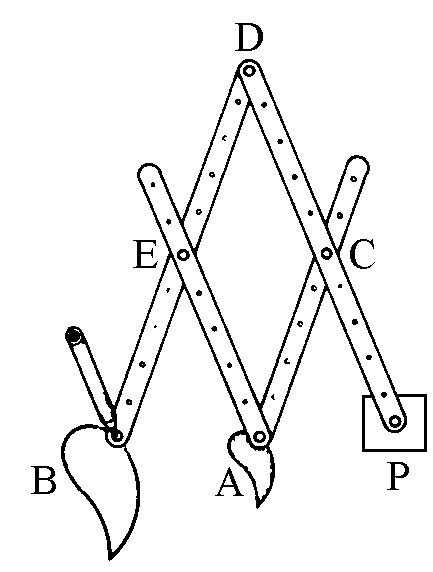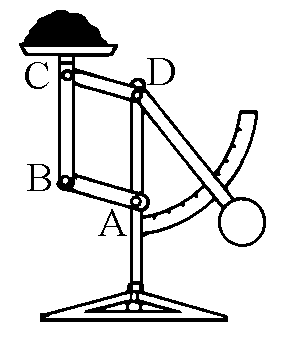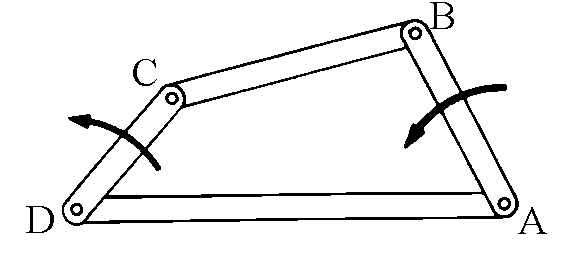|



|
The simplest curves are doubtless the
line and the circle. To draw circles, one uses a
compass. It's sufficient to keep a constant distance
between the tracing point and the centre, and one obtains
a near-perfect circle, even with a primitive compass. At
first sight, one would think that tracing a segment is
also a very simple operation: you just need to use a
ruler or pull a string taut. In fact, things don't
work exactly like that. In order to draw a good straight
line with a ruler, one needs the ruler itself to have a
"straight" side, but the value of a ruled line
depends on the ruler that was used to make it. So, who
made the first ruler? To apply the same method to the
circle would mean, for example, to take a coin and trace
its edge - the circular profile would be
"intrinsic" to the instrument itself.
It would be better to apply to the straight line the
principle used to draw the circle, rather than viceversa.
It may be worth noting that while the lathe is a
very ancient machine (the lathe used by the Etruscan
vase-makers was similar to the modern one), the
line-maker, a machine made to produce the straightest
possible profiles, appears only at the beginning of the
industrial and technological revolution. It could not have been another way. The lathe produces conical, cylindrical
or
other circular shapes without requiring a cone, a
cylinder or any other reference shape. The line-maker
needs to have "of itself" a straight line or a reference
plane as precise as possible. The construction of these
"references" happens by progressive
approximations, conceptually not dissimilar from passing
over and over the plane - an instrument which appeared
relatively recently. There is, in other words, a substantial
problem in tracing the simplest of curves, making the need to find an easy and accurate construction a daunting theoretical and practical problem.
The instruments on which Euclidean geometry is based,
the ruler and the compasses are, therefore, not
equivalent. Compasses are on themselves more
precise than the ruler, and it would seem desirable to
dispose of the latter. But in reducing the number of
instruments available, it is reasonable to expect
that the number of possible constructions will also
diminish. The discovery by Mascheroni from Pavia in 1797,
that any construction that can be obtained by ruler
and compasses may be obtained with the compasses alone
was surprising. By disposing of the ruler, the
construction becomes more complex, but the result becomes
more precise.
The interest of the problem lies not only in theory, as
in many machines and apparatuses, one wants a point to
move in a rectilinear direction with as little friction
as possible. One of the problems which most challenged
engineers at the end of the eighteenth and for part of
the nineteenth centuries was that of finding an useful
way of guiding the rod of a steam machine's piston into
an alternated rectilinear motion. Without such a
mechanism, the AB rod, which connects the piston rod to
the motion collection wheel, would push the piston rod
our of the vertical, quickly damaging the packing. On the
other hand, the mechanism must have no rubbing parts, to
avoid strong friction and a quick deterioration of the
materials.
|